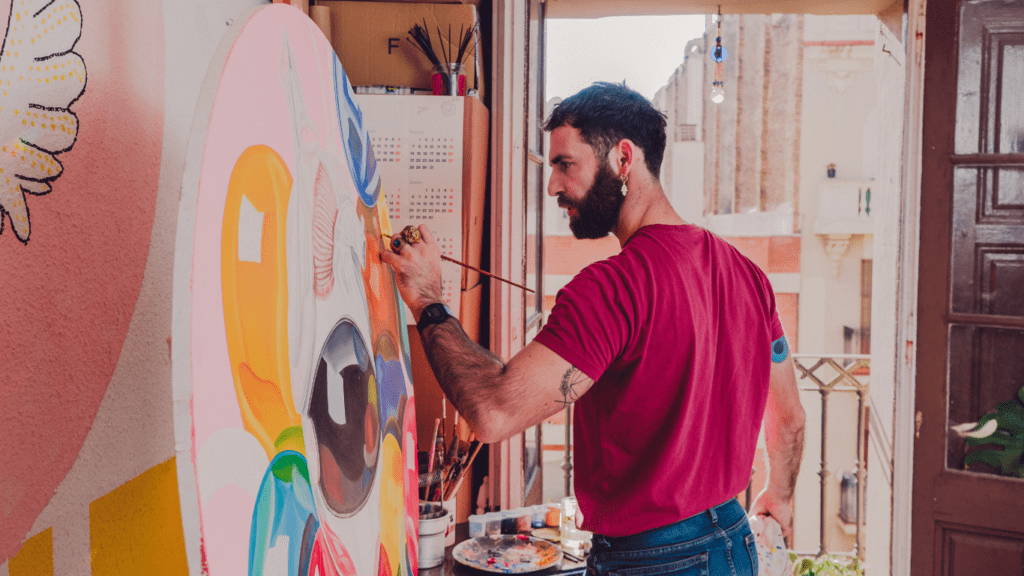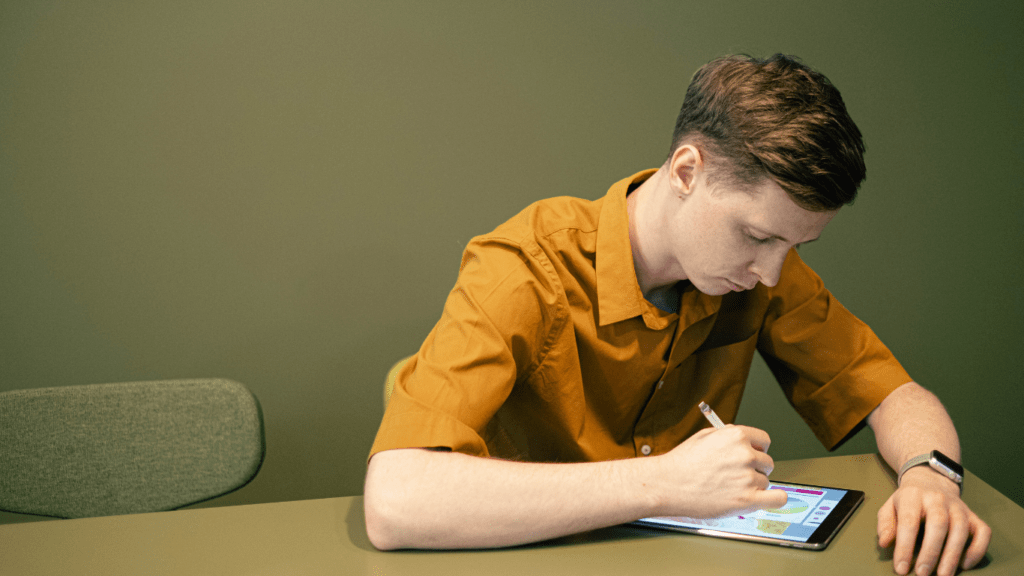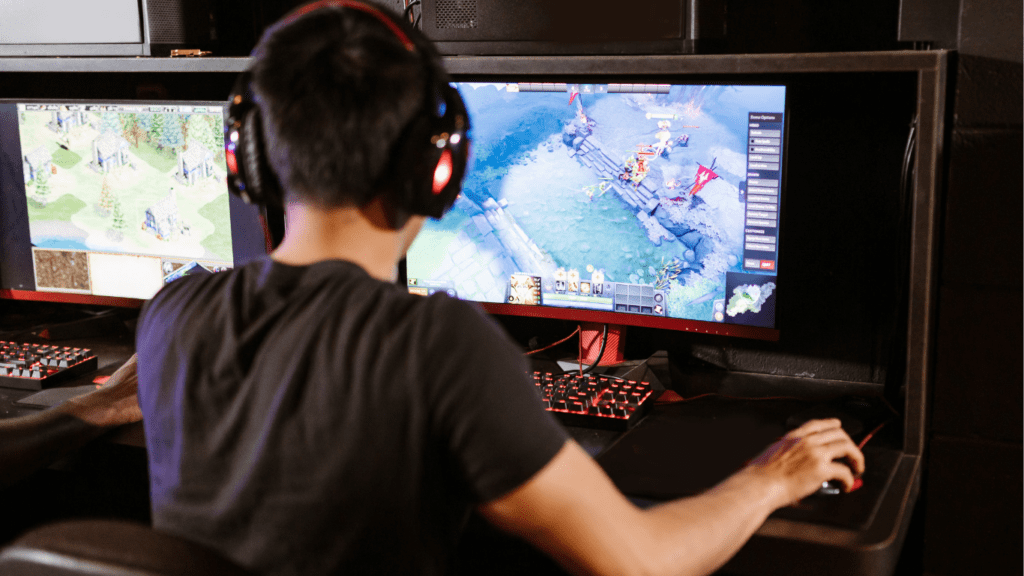Evolution of Digital Art
During the last few decades, digital art has transformed radically. It’s reshaping traditional art forms with innovative tools and mediums.
From Traditional to Digital
Digital art evolved from traditional methods. Artists began experimenting with technology in the late 20th century. Initially, they used basic software to digitize manual drawings. Early adopters like Harold Cohen created “AARON,” a program that could produce original art in the 1970s. Over time, artists migrated to more complex software and digital tools, incorporating 3D modeling, digital painting, and photo manipulation into their practice. This shift expanded creative possibilities, making it easier to experiment and correct errors. Traditional barriers, such as material costs, also diminished. An iPad and an Apple Pencil, for instance, can replace numerous physical supplies, making art creation more accessible.
Key Milestones in Digital Art History
Several milestones define digital art’s journey. In 1985, Andy Warhol used an Amiga computer to create digital art, bridging pop art and technology. The 1990s saw the rise of software like Adobe Photoshop, revolutionizing image editing and manipulation. By 2000, Wacom’s advanced graphics tablets provided artists with unprecedented control over their digital creations. The 2010s introduced breakthroughs like AI-generated art, exemplified by “Edmond de Belamy,” an AI-created portrait auctioned at Christie’s in 2018 for $432,500. Virtual reality (VR) and augmented reality (AR) also gained traction, enabling immersive art experiences. NFTs (non-fungible tokens) surged in popularity recently, offering digital artists new ways to monetize their work and ensuring ownership and authenticity of digital pieces. Blockchain technology underpins this movement, ensuring that digital artwork remains unique and verifiable.
By understanding these milestones, one can better appreciate the immense strides made in digital art and its ongoing evolution.
Current Breakthrough Technologies
Emerging technologies are revolutionizing digital art. These innovations provide artists with groundbreaking tools to enhance creativity and craftsmanship.
Artificial Intelligence in Art Creation
AI is transforming how art is created and experienced. With algorithms and machine learning, artists generate unique pieces that blend human input and computer precision. DeepArt and DALL-E are examples of AI-driven platforms, offering artists an expanded toolset. AI can analyze vast datasets, providing inspiration and new styles. Though still in development, AI promises to push artistic boundaries further.
Virtual and Augmented Reality Art
VR and AR bring a new dimension to digital art. These technologies allow for immersive and interactive experiences. Platforms like:
- Tilt Brush
- Adobe Aero
enable artists to create 3D artworks in virtual spaces. VR lets artists and audiences explore art from multiple perspectives, making exhibitions dynamic. AR overlays digital art onto the real world, enhancing public and private spaces with interactive elements. These tools make art more accessible and engaging.
Notable Digital Artists and Their Contributions

Exploring the pioneers and contemporary influential artists reveals the depth and evolution of digital art.
Pioneers of Digital Art
The journey of digital art features a few trailblazers. Andy Warhol stands out with his early use of an Amiga computer in 1985. Warhol’s reinterpretation of classic works using this platform showcased the potential of digital tools. Harold Cohen, another pioneer, developed AARON, an early computer program capable of creating art. Cohen’s work blurred the line between human and machine creativity.
Laurie Anderson used technology to merge performance and visual art in the 1980s. Her innovative approach integrated multimedia elements, setting the stage for future digital artists. Other early influencers include Lillian Schwartz and Vera Molnár. Schwartz used computers in the 1960s to create pioneering digital animations. Molnár, a mathematician and artist, incorporated algorithms into her abstract art. These pioneers laid the groundwork for the diverse and dynamic field of digital art.
Contemporary Influential Artists
Several contemporary artists have significantly impacted digital art. Beeple, also known as Mike Winkelmann, revolutionized the art world with his $69.3 million NFT sale at Christie’s in 2021. His work exemplifies the intersection of digital art and blockchain technology.
Raf Grassetti, a renowned visual artist, contributes to both video games and fine art. Grassetti’s realistic 3D models and characters push the boundaries of digital sculpture. Another notable name is Refik Anadol. Anadol’s data-driven art installations, created using algorithms and AI, redefine the relationship between data and aesthetics.
Artists like Krista Kim and Pak also influence digital art’s evolution. Krista Kim’s digital Zen gardens blend tranquility and technology, offering meditative spaces in the digital realm. Pak, an anonymous artist, creates enigmatic digital sculptures and has set new benchmarks in the NFT space.
These artists showcase the diverse possibilities and ongoing innovations within digital art.
Impact on the Art Market
Digital art has sparked a transformation in the art market, expanding the boundaries of traditional art commerce.
Digital Art Market Trends
The digital art market has seen exponential growth. From 2018 to 2021, sales of digital art surged by over 600% according to Art Basel and UBS reports. Investors now recognize the potential of digital assets. Auction houses like Christie’s have embraced digital formats, selling works by digital artists such as Beeple and Pak for millions of dollars.
Online marketplaces also drive this trend. Platforms like OpenSea and Rarible enable artists to reach global audiences without intermediaries. This direct-to-consumer approach increases profitability for artists. Virtual galleries and exhibitions further enhance visibility and sales opportunities.
The Role of NFTs
Non-fungible tokens (NFTs) play a crucial role in this market. NFTs ensure the authenticity and ownership of digital art, providing artists and buyers with security. In 2021, NFT sales hit $2.5 billion in the first six months alone, according to DappRadar.
Artists like Krista Kim use NFTs to sell their digital creations, securing royalties on secondary sales. This system benefits artists by providing ongoing income. Collectors also gain a verifiable piece of digital history. NFTs revolutionize art ownership and distribution, integrating technology with the art world in unprecedented ways.
NFT marketplaces flourish. OpenSea, Rarible, and Foundation host countless NFTs, giving creators diverse platforms to monetize their work. These platforms democratize art sales, offering artists new revenue streams and changing how art is bought and sold globally.
Digital art’s influence continues to rise, reshaping the art market and offering endless possibilities for creators and collectors.
The Future of Digital Art
The future of digital art looks promising with advancements in technology and expanding creative possibilities. Unprecedented innovations redefine how artists create and share their work.
Emerging Technologies
- Technologies such as blockchain and Artificial Intelligence (AI) are revolutionizing digital art.
- Blockchain enables secure transactions and ownership proofs through Non-Fungible Tokens (NFTs). This technology ensures artists can monetize and protect their work efficiently.
- AI offers limitless creative potential. Tools like DALL-E and DeepArt generate intricate artworks, pushing the boundaries of human imagination. These platforms allow artists to collaborate with AI, resulting in unique, co-created pieces.
- Virtual Reality (VR) and
- Augmented Reality (AR) heighten immersive experiences. Artists can create 3D installations accessible worldwide through VR headsets or AR-compatible devices.
Potential Challenges and Opportunities
While the future seems bright, digital art faces issues like cybersecurity threats and intellectual property disputes. Hackers target online galleries and NFT platforms, posing risks to artists’ revenue streams. Enhanced security measures and responsive monitoring systems mitigate these threats.
Opportunities abound for digital artists. With online marketplaces like OpenSea and Rarible, artists reach global audiences. The constant evolution of tech tools ensures artists can expand their creative horizons perpetually. Studios and artists adopting mixed-reality tech, for instance, tap into broader and more interactive storytelling methods.
Advancements in education also provide opportunities. Online courses and virtual workshops help aspiring artists learn and grow, democratizing access to art education. Peer collaboration on digital platforms fosters community, encouraging innovation and support.





